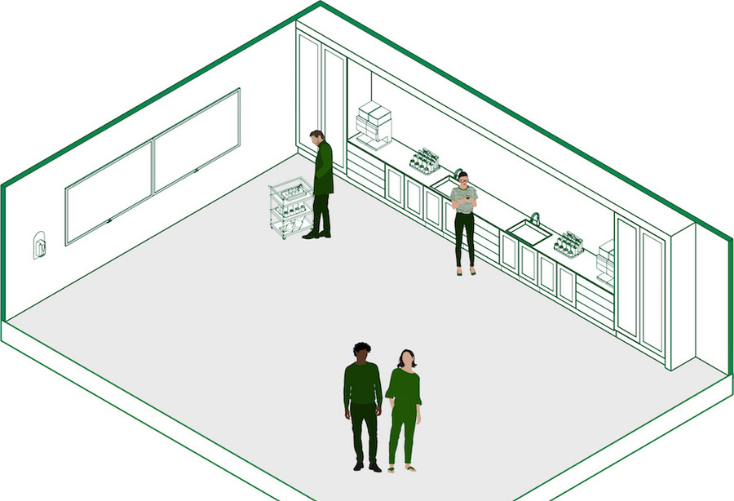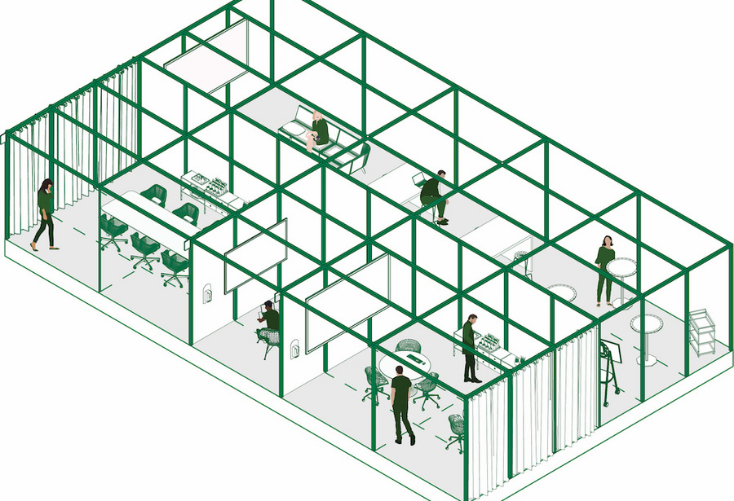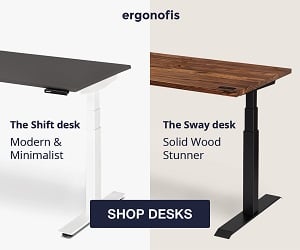- Our collective remote work experience has been an experiment for all of us, providing insight into what we need to work most effectively.
- The human need to be together is as essential as ever for fortifying the workplace community, social relationships, and a company’s mission and culture.
- For Design Director, Meena Krenek, evaluating the effect of COVID-19 on our work environments means re-thinking how work contributes to the company mission and how we obtain the energy that fuels our work.
This article was originally published on Work Design Magazine.
Designers are inherent problem-solvers. We constantly seek to create and build the most resilient environments for clients, helping businesses become healthier, more productive and providing office culture experiences that differentiate them from competitors. We know that one-size doesn’t fit all, and that has only become more evident as we deal with the COVID-19 pandemic.
Our collective remote work experience has been an experiment for all of us, providing insight into what we need to work most effectively. What have we learned?
Well, countless companies and entire industries have learned that their employees, if afforded optimal conditions, can better manage their “focus work” at home, which is typically around 50 percent of most people’s time. While individual productivity is a key concern, the human need to be together is as essential as ever for fortifying workplace community, social relationships, and a company’s mission and culture. Fortunately, virtual collaboration tools have enriched team building amongst scattered staff and, to some extent, mitigated the lack of in-person contact.
All the above raises a lot of questions about what the workplace could and should look like in 2020, 2021 and beyond. Truly impactful and effective workplaces promote connections among all staff, whether they are exchanging ideas at a meeting room whiteboard, chatting at the coffee machine or video calling a colleague working remotely.
There will be new approaches, and practices for these organizations seeking out more meaning and purpose to face-to-face encounters and employees looking purely for human connection and group activity. The workplace should place greater value on “We Space,” which will allow for face-to-face meetings in workplace café lounges, social hubs and so forth.

Today, as we evaluate the effect of COVID-19 on our work environments, we need to be thinking about how work contributes to the greater company mission every day and how we obtain the energy that fuels our work.
Just like this virus that we cannot see, culture is omnipresent. In the future, the physical workplace will become a place for a more curated culture, while maintaining our new virtual company culture that has developed considerably since lockdown began. New groups of leaders are emerging. Agile and resilient employees are succeeding through staying focused, creative and innovative. They are helping to share their headspace with others in their virtual circles and benefitting the culture of the digital workplace.
Given these substantial cultural and behavioral shifts over the last six months, designers must ask their clients some critical questions:
- What is the new, post-COVID-19 office, and what really matters most to employees today?
- In a future de-densified, post-COVID-19 world, does the traditional one-workstation-per-person ratio still make sense?
- Should we instead design physical places for meeting, collaborating, and socializing?
- To best reinforce a company’s mission, how can we give employees the tools and environments they need to be effective at home or in the office?

Fostering a Fluid Work Environment
For years, designers have talked about the “third space” or additional (non-work or home) choice, such as a coworking environment or coffee shop. Is it time for the traditional office to become that third space? Should the office relinquish its function as a provider of private workstations and instead leans into its role of a “meeting space” — that is, one designed to support collaboration and connection?
We have developed a concept for a new hybrid model that would encourage a fluid work environment where the work experience physically and virtually co-exist. Teams could continue to innovate on both platforms, supporting individual workstyles with choice and autonomy yet allowing employees to decide whether they want to connect with coworkers in a meeting room or work remote.
Ultimately, the one essential component is creating places to engage with each other that provide meaning to the workplace and the energy needed to thrive and do impactful work. In the office, this will be facilitated by Meeting Spaces and Host Stands.
The new hybrid model workspace can be also divided, if necessary, into several relatively intimate (as health and safety protocols allow) four-person small team spaces that facilitate both individual work and meetings. The development of pods of small team spaces that balance meeting with focus work would encourage both fluid workflow and collaboration.

The Office is a Destination, Not a Default
Moving forward, we must rethink how the workplace is truly supporting individual’s workstyles, physical and mental well-being, while offering a high impact in-person experience. The Meeting Space was conceptualized to be truly mobile with flexible infrastructure such as a demountable wall system combined with furniture on wheels, mobile writable surfaces, and endless seamless hands-free technology. Such fluidity of function would allow employees to weekly—even daily—make a variety of temporary spaces. The use of the space could be handled and scheduled through a corporate app, and the “rooms” would be equipped with a mobile hospitality cart stocked with individually wrapped snacks and drinks, allowing employees to do their best work.
Ultimately as we transition into a new era of workstyles, the traditional office must adapt from a provider of private workstations and instead embrace its role of a “Meeting Space” — one designed to support collaboration and connection – a destination that offers something remote work cannot.

Keeping Company Culture Top of Mind
The role of our physical work environment in supporting and emboldening company culture has never been more pertinent. To aid that, we envision a fixed “Host Stand” at the entry of the office space that could further preserve the welcoming company culture, featuring a digital screen displaying ongoing work, upcoming events, and company data—all branded and tied to the company’s mission. The host stand would also include touch-free coffee and water dispensers, at least two widely spaced sinks to promote handwashing, and a long counter around which comfortably distanced co-workers could gather.
The office begins taking on a role of a “resource center” for their employees, this becomes a place to showcase the mission and stories of the company by simply displaying the work being created on flat screens or projection, and by even having a place to purchase company swag. Research has shown us that wearing company attire has indirectly shown the dedication and commitments employees have for the company and supports retention.

In recent memory, there has never been a more uncertain, and in some ways exciting, shift in global workstyles and behaviors.
For designers, this has and will continue to raise many challenges but also many opportunities. Opportunities to innovate and push the boundaries of what we think ‘work’ is and how we define ‘the office.’ Everything around us supports the human experience and we are in a position to develop, envision, and curate these new ways of working in a post COVID world.
We typically design spaces that support physical and mental wellness, and with this deeper consciousness about spatial awareness and sensory components, like touch and sight, we can awaken a greater meaning to the spaces we design because these environments that provide psychological safety will be the spaces we desire to live, work, and play in.
The balance of physical and virtual work experiences will become the norm for many organizations, and team members—no matter where they are—will continue to collaborate and innovate. And yet, despite this ‘new normal’, one thing remains certain: meaningful in-person experiences, and physical environments that support them, are critical for companies to ensure their employees don’t just work, but thrive.


 Dr. Gleb Tsipursky – The Office Whisperer
Dr. Gleb Tsipursky – The Office Whisperer Nirit Cohen – WorkFutures
Nirit Cohen – WorkFutures Angela Howard – Culture Expert
Angela Howard – Culture Expert Drew Jones – Design & Innovation
Drew Jones – Design & Innovation Jonathan Price – CRE & Flex Expert
Jonathan Price – CRE & Flex Expert












